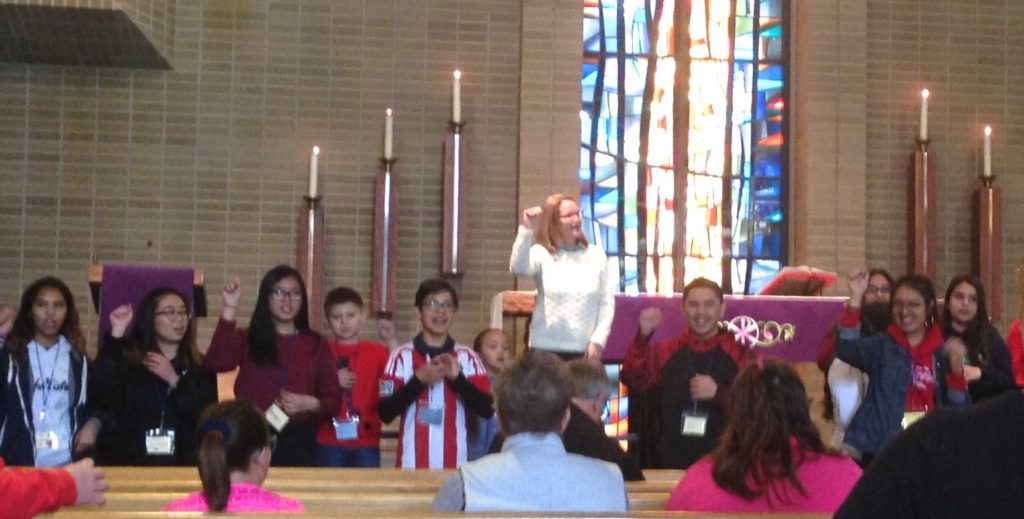Today’s post is from Marissa Sotos, mission developer at Tree of Life in Minneapolis, MN.
I was 22 when I took communion for the first time. The church I grew up in only communed once a year, and by the time I was old enough to partake, I was also old enough to be skeptical.
Then a year after college I found myself sitting in a Lutheran church. Working in the congregation’s office had started out as just a job, but soon I got curious, and once I experienced worship, it drew me back like gravity. Intellectually I was still an atheist, but on Sunday mornings I just couldn’t help myself. There I’d be again, stumbling through the liturgy, and there God would be again at the back of my mind saying, “Just talk to me. Please.”
I didn’t though, and I also didn’t take communion. Each week the ushers would come by and each week I would shake my head. I knew communion meant eating Jesus’ body and drinking his blood. That seemed like something I shouldn’t do unless I was willing to let God be a part of my life.
Over the weeks I started to change though. That God-voice in the corner of my mind wasn’t going away, and I began to look at the people taking communion with less trepidation and more longing. One day, the balance finally shifted. Instead of hunkering down when the ushers came by, I stood up and followed the congregation. The pastor recognized me, “This is the body of Christ given for you, Marissa.” I took it and ate, I drank the wine, and then as I turned to go back to my seat, I completely panicked. What had I just done? Had I eaten God? How would that change me? I rushed back to my pew, lightheaded and with my heart pounding.
The rest of the service was a blur and I left as soon as I could. Outside I tried to clear my head, but it was no use. That God-voice was there, more insistent than ever, “Just talk to me. Please.” Having just eaten Jesus’ body, I felt that I could no longer refuse. “OK God, yes, I’ll talk to you.”
I was right to wonder how communion would change me. It did, and it does. These days I approach the table with more love and less fear, but as I stretch out my hands I still wonder, “How will this change me?”

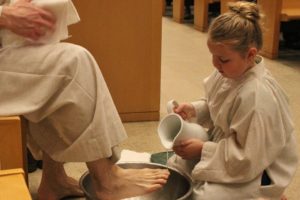 At Christ Church, Maundy
At Christ Church, Maundy 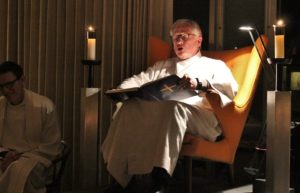 Christ Church’s Easter Vigil is a nomadic affair; the congregation wanders through several locations before ending up crowded around the table for the meal. For me, the most moving part is when, like the disciples two thousand years ago, we gather in a room to tell each other stories and sing songs. We hear God call the world into being, thrill at the Israelites’ narrow escape from Egypt, and laugh at the absurdity of King Nebuchadnezzar. These are the stories that bind us together in our faith and call us to lives of trust and love. Through these stories I feel connected to everyone in the room and to Christians around the world; whatever our differences, these stories are our shared foundation.
Christ Church’s Easter Vigil is a nomadic affair; the congregation wanders through several locations before ending up crowded around the table for the meal. For me, the most moving part is when, like the disciples two thousand years ago, we gather in a room to tell each other stories and sing songs. We hear God call the world into being, thrill at the Israelites’ narrow escape from Egypt, and laugh at the absurdity of King Nebuchadnezzar. These are the stories that bind us together in our faith and call us to lives of trust and love. Through these stories I feel connected to everyone in the room and to Christians around the world; whatever our differences, these stories are our shared foundation.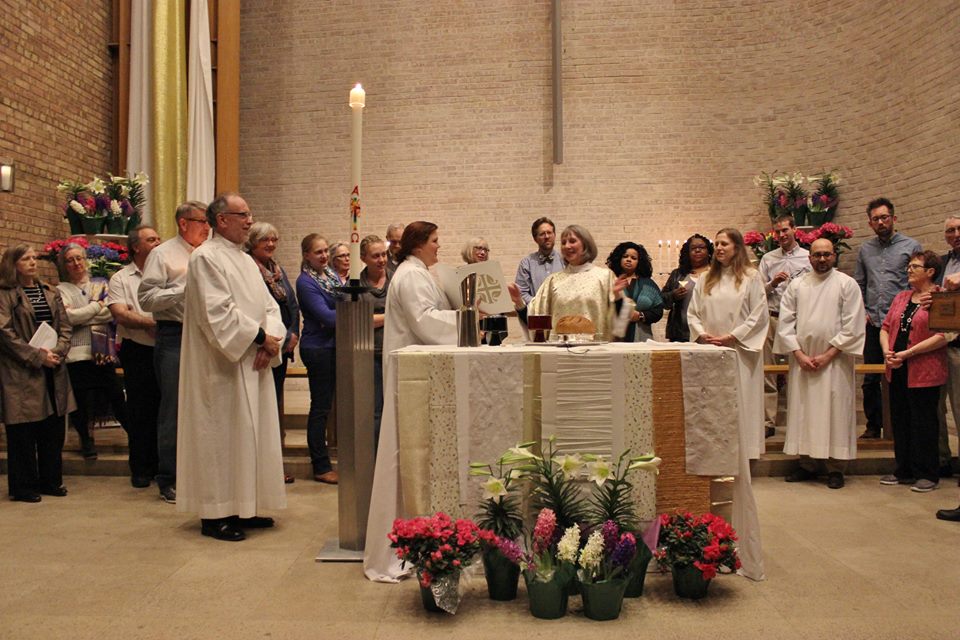
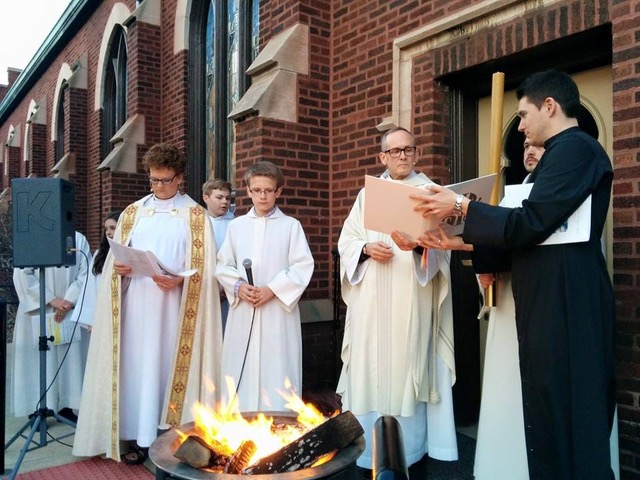 Most of us have had those mountaintop experiences–those moments when you can feel the adrenalin pumping through your body, when the senses are heightened, when the clouds part and you can see more clearly than yesterday—when everything finally makes sense. For me, that describes perfectly the experience of the Easter Vigil. It’s not just a “special service.” It is the Queen of all Feasts, to quote an ancient writer.
Most of us have had those mountaintop experiences–those moments when you can feel the adrenalin pumping through your body, when the senses are heightened, when the clouds part and you can see more clearly than yesterday—when everything finally makes sense. For me, that describes perfectly the experience of the Easter Vigil. It’s not just a “special service.” It is the Queen of all Feasts, to quote an ancient writer.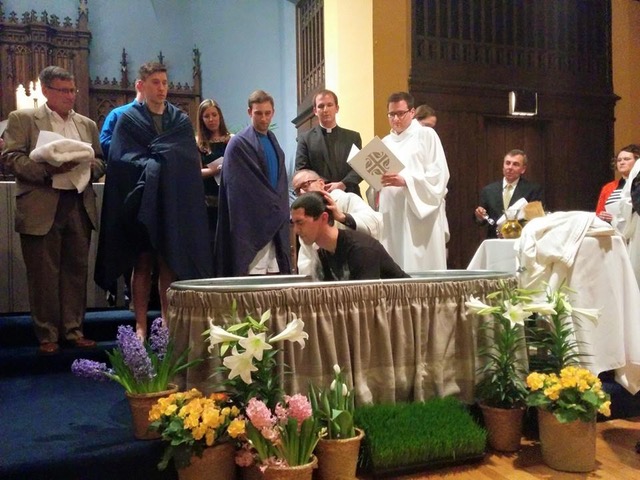
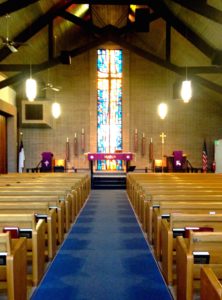 The soaring arches in the large sanctuary of St. Mark’s Lutheran Church in Aurora, Colorado, reach high above the long rows of pews to focus on the chancel’s wide stone altar and brilliant stained glass window. Such elegance seems out of place in the surrounding neighborhood of modest tract homes and the nearby mini-mall, all showing their age.
The soaring arches in the large sanctuary of St. Mark’s Lutheran Church in Aurora, Colorado, reach high above the long rows of pews to focus on the chancel’s wide stone altar and brilliant stained glass window. Such elegance seems out of place in the surrounding neighborhood of modest tract homes and the nearby mini-mall, all showing their age.  nd those hard-to-sing hymns.
nd those hard-to-sing hymns.